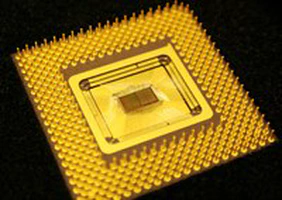ROLLS is a reconfigurable neuromorphic chip with 256 silicon neurons and 128K plastic synapses that implements spike-timing learning rules. It allows emulation of neural systems with adaptive behaviors using analog neuron/synapse circuits with added digital configuration logic for flexibility.
Developed By:
INI
The ROLLS chip implements key requirements for online learning and adaptive behavior in neuromorphic systems, with highly flexible digital configuration options.
Overview
- Presented as a “Reconfigurable On-line Learning Spiking Neuromorphic Processor”
- 256 silicon neurons, 128K plastic synapses, 256K programmable synapses
- Mixed-signal analog/digital implementation
- 180nm CMOS process, 51.4 mm2 die area
- Modeling of neural systems that adapt in real-time through on-chip learning
Silicon Neurons
- Implement adaptive exponential Integrate-and-Fire (I&F) model
- Exhibit various spiking behaviors (frequency adaptation, refractory period, threshold adaptation, bursting)
- Highly configurable through 13 tunable bias parameters
- Low mismatch between neurons (9.4% avg)
- On-chip learning circuits to evaluate spike-timing-based plasticity rules
Synapses
- Two core arrays:
- Long-term plasticity (LTP) synapses with bi-stable weights using drift-diffusion mechanism
- Short-term plasticity (STP) synapses with 4-level programmable weights and short-term depression
- LTP array models NMDA receptors with longer time constants
- STP array models AMPA/GABA receptors with shorter time constants
- Sparse digital logic for memory and configuration in every synapse
- Digital configuration of synapse types and connectivity
Architecture
- Virtual “diffuser” synapses to combine signals from groups of synapses
- Synapse demultiplexing to allow flexible neuron-synapse mapping
- Asynchronous peripheral digital circuits for input/output
- Bias generator for tuning analog parameters
- ADC readout circuit for monitoring internal signals
Applications
- Hardware attractor networks to model working memory and decision making
- Real-time image classification demonstration with spiking vision sensor
Related publications
| Date | Title | Authors | Venue/Source |
|---|---|---|---|
| April 2015 | A reconfigurable on-line learning spiking neuromorphic processor comprising 256 neurons and 128K synapses | Ning Qiao, Hesham Mostafa, Federico Corradi, Marc Osswald, Fabio Stefanini, Dora Sumislawska, Giacomo Indiveri | Frontiers of Neuroscience |
Help Us Improve this Guide
Our hardware guide is community-maintained. If you know of a chip we should add, see an error, or have updated information, please let us know by opening an issue on our GitHub repository.




